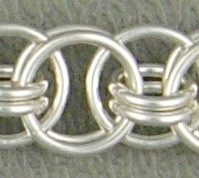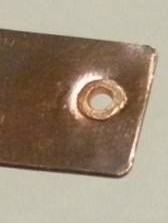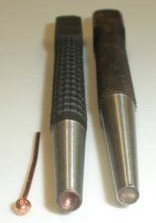- NEW DVD Series – Stone Setting with Bezels
- Tube Set Charm by Kim St. Jean
- Prong Basket Pendant by Kim St. Jean
- NEW DVD Series – Stone Setting with Cold Connections
- New DVD Series – Stone Setting with Wire
- NEW DVD Series: Introduction to Stone Setting by Kim St. Jean
- Featured Tool: Bracelet Bending Plier
- NEW Dvd by Eva Sherman
- Fun, Fast Fold Forming DVD Series
- Double Band Ear Cuff from Alex Simkin
Avoiding Scratches
by Judy Ellis, Wirejewelry.com
Wire Jewelry Tip for September 12th, 2016
Avoiding Scratches
by Rhonda Chase
Today we bring you another quick tip from Rhonda Chase on how to avoid scratches when you are wrapping cabochons.
Rhonda says:
- The combination of slick cabochons and sharp pliers makes scratching stones a common problem.
- The number one thing I tell new wire wrappers is to use very hard, smooth stones. All gemstones have a hardness rating, so look for stones with a rating of 7 or more.
- Jasper, agate, and onyx are very good for beginners as long as you choose the less expensive stones. As you have more experience with using jewelry pliers, scratches will become a rare occurrence.
You can find the hardness ratings of various gemstones HERE!
Today we also feature a short excerpt from Mary Baily’s article: An Introduction to Gemstones
The most common stones are considered “semi-precious” in the present market. The following list contains stones available as either beads or cut cabochons, in some cases as faceted cabochons or faceted beads, or as cabbing stone rough or cut slabs for those who do their own lapidary work: This list is by no means a complete reference; it is merely a short list of common recognizable stones.
- Agate (All Kinds)
- Jasper (All Kinds)
- Amethyst
- Tiger Eye
- Rose Quartz
- Malachite
- Carnelian
- Onyx
- Moonstone
- Labradorite
- Assorted Quartz
- Coral
- Amber
- Copal
- Jet
- Pearls
- Abalone
Add synthetic gemstones in monthly birthstone colors and you suddenly have a wide palette of color and color variations to work with. And, because these are considered “semi-precious” you suddenly have a large range of affordable stones to work with in a variety of sizes.
Basic Definitions of stone:
|
Imitation Gemstones
|
They have the same basic chemical compositions, colors, and characteristics as a natural gemstone but are made from synthetic spinel or synthetic corundum. Common imitation gemstones are ruby, opal, sapphire and emerald. |
|
Lab Created Gemstones
|
Created in a lab, these stones have the same composition as natural gemstones as the base for their creation that make up the natural gemstone only in purer amounts. Because of this, these created gemstones are more appealing than the naturals and are often listed as “fine gemstones”. |
|
Stabilized Gemstones
|
This is where gemstone material has been mixed with a clear resin to further “stabilize” the hardness and clarity of the stone. When a stone has been stabilized it also can at times be color enhanced. Turquoise is a good example of a gemstone that is often stabilized. |
|
Simulated Gemstones
|
Falling along side of imitation and lab created stones, simulated gemstones do not have the same mineral composition as natural stones. They imitate the gemstone and usually are made of glass or plastic. |
There are many products out there to help you polish some of those scratches away – CLICK HERE to see a few!
If you’d like to see more from Rhonda, you can see her blog posts HERE!
Happy Wrapping!
![]()
Click to Receive Daily Tips by Email
























0 comments